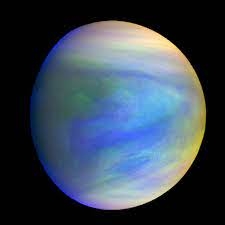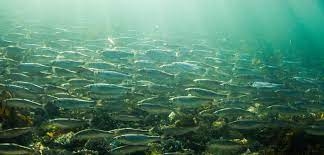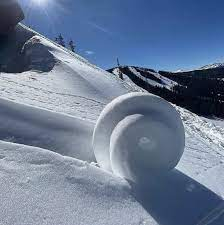
The Earth’s crust has been in constant motion since its formation 4.6 billion years ago. Fractured into a patchwork of plates and floating on currents of molten rock beneath, the plates collide and pull apart.
In fact the floor beneath your feet, even though it feels stable and motionless, rests upon a land mass that is in continuous motion. The plates that form the Earth’s crust are 50-100 kilometers thick. It has long been suspected that the plates are in motion, but the mechanism that drives them remained a mystery for many years.
The east coast of South America and the west coast of Africa look as though they would fit together like the pieces of a jigsaw puzzle. With a bit of rearranging, most of the continents can be put together too. This was one of the first clues to continental drift, but other evidence supports the theory. Recently, the magnetic properties of rocks have been used to demonstrate the movement of continents. Lasers measure the movement across the San Andreas Fault in California, where two continental plates slide past each other. Measurements from satellites show North American and Europe to be drifting apart at the rate of about 4 centimetres a year.
Today we know that all the surface elements of planet Earth are in constant motion. To understand continental drift we have to understand how these elements, or plates, move. The study of the crustal plates and their movement is called Plate Tectonics.
Current form within any liquid when it is heated, just as they do in a pot of boiling soup. Similar currents form with the Earth’s thick, dense mantle. Radioactivity in the Earth’s core is a cause of the uneven heating of the lower mantle.
As the semi-molten rock of the mantle is heated, it rises, creating massive, slow convection currents within the Earth. The heated rock spreads laterally at the base of the solid lithosphere, dragging fragments of the Earth’s crust with it. As the Earth’s crust moves, volcanoes and earthquakes occur.
A powerful convection current pulls the Earth’s crust apart. Rift valleys form where continental plates separate. East Africa’s Great Rift Valleys, evidence of a continental pulling apart, is also a glimpse of an ocean in the making. When the rift is deep enough, it will be flooded by the sea.
The Gulf of Suez and the Gulf of Aqaba slowly advance into rifts that mark a fracturing continent. A gift extends from the Red Sea and splits at its northern end, signaling the eventual of Africa and the Middle East.
 In the beginning, the Earth's atmosphere was made up of only nitrogen, carbon dioxide, and some hydrogen. There was very little oxygen present, and it was produced by stromatolites- which are rocks formed by the growth of blue green algae- strewn in the sea. Whatever oxygen was present was quickly absorbed by rocks and minerals. Gradually however, excess oxygen began to accumulate in the atmosphere. This excess oxygen had a dramatic effect on the living cells present. It triggered the evolution of a higher form of life. These were nucleus-containing eukaryotic cells. Thus, the simple blue green algae that were the first form of life became stepping stones to higher life forms, thanks to rising oxygen levels in the atmosphere.
In the beginning, the Earth's atmosphere was made up of only nitrogen, carbon dioxide, and some hydrogen. There was very little oxygen present, and it was produced by stromatolites- which are rocks formed by the growth of blue green algae- strewn in the sea. Whatever oxygen was present was quickly absorbed by rocks and minerals. Gradually however, excess oxygen began to accumulate in the atmosphere. This excess oxygen had a dramatic effect on the living cells present. It triggered the evolution of a higher form of life. These were nucleus-containing eukaryotic cells. Thus, the simple blue green algae that were the first form of life became stepping stones to higher life forms, thanks to rising oxygen levels in the atmosphere.
 The Precambrian Period spans a long period of the Earth's history. It starts with the planet's creation about 4.5 billion years ago, and ends with the emergence of complex, multicelled life-forms almost four billion years later. It is extremely significant, because it is the earliest of the geologic ages which are marked by different layers of sedimentary rock. Laid down over millions of years, these rock layers contain a permanent record of the Earth's past, including the fossilized remains of plants and animals buried when the sediments were formed.The Precambrian is divided into two parts- the Archaean time, and the Proterozoic Era. There may not have been many different forms of life, but very important changes were taking place during the Precambrian. The Earth was formed, and its outer covering cooled and hardened into a crust. The hot molten insides of the Earth leaked out at weak places in the crust to form volcanoes. The clouds formed by the volcanoes caused huge amounts of rain to fall, and the oceans were created.The first life formed. The oceans were like a thick soup, and their chemistry made them the perfect place for life to begin. The first one-celled organisms formed during the Precambrian Era. They had an important job to do. They helped make the air and water around the Earth full of oxygen. Once there was plenty of oxygen, new life could form. This life would have many cells which would evolve into different kinds of animals. All of the important work of the Precambrian period made the Earth ready for what would come next.
The Precambrian Period spans a long period of the Earth's history. It starts with the planet's creation about 4.5 billion years ago, and ends with the emergence of complex, multicelled life-forms almost four billion years later. It is extremely significant, because it is the earliest of the geologic ages which are marked by different layers of sedimentary rock. Laid down over millions of years, these rock layers contain a permanent record of the Earth's past, including the fossilized remains of plants and animals buried when the sediments were formed.The Precambrian is divided into two parts- the Archaean time, and the Proterozoic Era. There may not have been many different forms of life, but very important changes were taking place during the Precambrian. The Earth was formed, and its outer covering cooled and hardened into a crust. The hot molten insides of the Earth leaked out at weak places in the crust to form volcanoes. The clouds formed by the volcanoes caused huge amounts of rain to fall, and the oceans were created.The first life formed. The oceans were like a thick soup, and their chemistry made them the perfect place for life to begin. The first one-celled organisms formed during the Precambrian Era. They had an important job to do. They helped make the air and water around the Earth full of oxygen. Once there was plenty of oxygen, new life could form. This life would have many cells which would evolve into different kinds of animals. All of the important work of the Precambrian period made the Earth ready for what would come next. Hallucigenia was a bizarre looking fossil which appeared to have tentacles on its back. For a long time, scientists were baffled by it, and unable to determine what kind of creature it was. Finally, they realized that they were looking at it upside down! The tentacles were in fact, legs that resembled the tubular legs of today’s velvet worms!
Hallucigenia was a bizarre looking fossil which appeared to have tentacles on its back. For a long time, scientists were baffled by it, and unable to determine what kind of creature it was. Finally, they realized that they were looking at it upside down! The tentacles were in fact, legs that resembled the tubular legs of today’s velvet worms! The Archaean Period lasted from 3800 to 2500 million years ago. The Earth was still about three times as hot as it is today, and most of its area was covered with oceans. The Earth’s atmosphere was mainly carbon dioxide, with very little oxygen in it. Land was beginning to form as volcanoes that emerged from the oceans. The forming of the continents also began during this period, probably as lava flow under the ancient oceans.About this time, the earliest living cells formed on Earth. These cells all lived in the oceans. One type of bacteria present then was the cyanobacteria, or blue-green algaes. These bacteria appear to have had a very strong cell-wall, and the ability to form layers in the ancient sediments. The formations are called stromatolites. They can be found in Archaean rock formations of Western Australia.So to sum up, the Archaean Period was a time of continent-building, and the first stages of early life can be traced back to this period.
The Archaean Period lasted from 3800 to 2500 million years ago. The Earth was still about three times as hot as it is today, and most of its area was covered with oceans. The Earth’s atmosphere was mainly carbon dioxide, with very little oxygen in it. Land was beginning to form as volcanoes that emerged from the oceans. The forming of the continents also began during this period, probably as lava flow under the ancient oceans.About this time, the earliest living cells formed on Earth. These cells all lived in the oceans. One type of bacteria present then was the cyanobacteria, or blue-green algaes. These bacteria appear to have had a very strong cell-wall, and the ability to form layers in the ancient sediments. The formations are called stromatolites. They can be found in Archaean rock formations of Western Australia.So to sum up, the Archaean Period was a time of continent-building, and the first stages of early life can be traced back to this period.  Do you know why you sometimes find sea shells on top of rocks? It is because most sedimentary rocks were once found under the sea. Animals that were buried in the sediment became fossilized. Later, movements of the Earth’s crust resulted in the sea bed being pushed upward, and rocks that had been under the sea now became mountain tops.
Do you know why you sometimes find sea shells on top of rocks? It is because most sedimentary rocks were once found under the sea. Animals that were buried in the sediment became fossilized. Later, movements of the Earth’s crust resulted in the sea bed being pushed upward, and rocks that had been under the sea now became mountain tops.
 People often think of fossils as being mineralized bones or shells stored in museums. However, they can even be any remains or traces of ancient organisms. They can ever be footprints, burrows, or casts of bodies, with nothing else surviving. Interpreting fossils is sometimes like solving a jigsaw puzzle.One of the ways of interpreting a fossil to compare the fossil with the skeleton of a living creature that seems to resemble it. For example, there are many well preserved fossils of coiled shell of ammonites, which are an extinct group of marine animals with no backbone. However, the soft body parts of these animals have not been preserved. But the fossils can be reconstructed, because a modern marine species known as the nautilus is very similar to the ammonites. So, in this case, interpretation is possible. When only one or two skeletons of a species have been discovered, there is no way of interpreting them correctly. For example, in the case of a dinosaur fossil, what was once interpreted as being a horn is now believed to be a large pointed thumb? So, until many similar specimens have been found, it is unwise to attempt a species description
People often think of fossils as being mineralized bones or shells stored in museums. However, they can even be any remains or traces of ancient organisms. They can ever be footprints, burrows, or casts of bodies, with nothing else surviving. Interpreting fossils is sometimes like solving a jigsaw puzzle.One of the ways of interpreting a fossil to compare the fossil with the skeleton of a living creature that seems to resemble it. For example, there are many well preserved fossils of coiled shell of ammonites, which are an extinct group of marine animals with no backbone. However, the soft body parts of these animals have not been preserved. But the fossils can be reconstructed, because a modern marine species known as the nautilus is very similar to the ammonites. So, in this case, interpretation is possible. When only one or two skeletons of a species have been discovered, there is no way of interpreting them correctly. For example, in the case of a dinosaur fossil, what was once interpreted as being a horn is now believed to be a large pointed thumb? So, until many similar specimens have been found, it is unwise to attempt a species description


 Fossils form when an animal or plant dies in water or nearby places. The water insulates the remains from many of the elements that contribute to decomposition. For example, when an animal has died of old age at the bottom of the sea, bacteria consume the soft body parts, but leave the hard exoskeleton intact. As time passes, sediments bury the exoskeleton. As the sediments continue to pile on, the lower layers become compacted by the weight of the layers on top. Over time, this pressure turns the sediments into rock. As the continental plates move around the Earth, crashing into each other, mountains are formed. Former sea floors are lifted up, and become dry land. Thanks to the movement of the plates, fossils will come closer to the surface and nearer to discovery by some fortunate fossil hunter. Fossils are finally revealed through the forces of erosion.Though there are millions of fossils that have been discovered and millions more waiting to be discovered, fossilization is a rare occurrence. Soft bodied animals and plants that have no woody parts are rarely fossilized.
Fossils form when an animal or plant dies in water or nearby places. The water insulates the remains from many of the elements that contribute to decomposition. For example, when an animal has died of old age at the bottom of the sea, bacteria consume the soft body parts, but leave the hard exoskeleton intact. As time passes, sediments bury the exoskeleton. As the sediments continue to pile on, the lower layers become compacted by the weight of the layers on top. Over time, this pressure turns the sediments into rock. As the continental plates move around the Earth, crashing into each other, mountains are formed. Former sea floors are lifted up, and become dry land. Thanks to the movement of the plates, fossils will come closer to the surface and nearer to discovery by some fortunate fossil hunter. Fossils are finally revealed through the forces of erosion.Though there are millions of fossils that have been discovered and millions more waiting to be discovered, fossilization is a rare occurrence. Soft bodied animals and plants that have no woody parts are rarely fossilized. Paleontology is the study of fossils. Paleontology has played a key role in developing the theory of evolution. The study of fossils has shown that the animals and plants of prehistoric times were very different indeed from the animals and plants of today. By reassembling fossils bones, scientists can get an idea of the size and shape of the creatures that inhabited the Earth before the appearance of humans. Teeth and shells that have been fossilized also tell us much about the lifestyle of these creatures. Fossils of insects are often found embedded in amber, which is a transparent rock nodule formed when the resin from trees petrifies. Small creatures are sometimes trapped inside the amber, and are perfectly preserved to give us a glimpse of ancient insects.Trace fossils are also important in the study of evolution. Trace fossils are tunnels, worm casts and tracks that animals have made on soft sediment that has later hardened into rock. These imprints of animals on the move reveal much about the lives of ancient species, including their size, gait, stride length, and speed.
Paleontology is the study of fossils. Paleontology has played a key role in developing the theory of evolution. The study of fossils has shown that the animals and plants of prehistoric times were very different indeed from the animals and plants of today. By reassembling fossils bones, scientists can get an idea of the size and shape of the creatures that inhabited the Earth before the appearance of humans. Teeth and shells that have been fossilized also tell us much about the lifestyle of these creatures. Fossils of insects are often found embedded in amber, which is a transparent rock nodule formed when the resin from trees petrifies. Small creatures are sometimes trapped inside the amber, and are perfectly preserved to give us a glimpse of ancient insects.Trace fossils are also important in the study of evolution. Trace fossils are tunnels, worm casts and tracks that animals have made on soft sediment that has later hardened into rock. These imprints of animals on the move reveal much about the lives of ancient species, including their size, gait, stride length, and speed. Fossils are the remains of animals or plants which once lived on the Earth millions of years ago. When fossils were first discovered, people did not really understand what they were, and so, many myths and folklore developed over time, about where fossils came from.
Fossils are the remains of animals or plants which once lived on the Earth millions of years ago. When fossils were first discovered, people did not really understand what they were, and so, many myths and folklore developed over time, about where fossils came from. Over 40,000 years ago, giant bears roamed over Europe. Some of them were buries in caves while hibernating, and over hundreds of years, their bodies turned into fossils with huge canine teeth. When these fossils were discovered in the Middle Ages, they were thought to be the remains of a mythical creature, the fire breathing dragon.
Over 40,000 years ago, giant bears roamed over Europe. Some of them were buries in caves while hibernating, and over hundreds of years, their bodies turned into fossils with huge canine teeth. When these fossils were discovered in the Middle Ages, they were thought to be the remains of a mythical creature, the fire breathing dragon. Earth is estimated to be about 4.5 billion years old, hand for much of that history, it has been home to life in one form or another. Today, there are several theories for how life arose on Earth. The first of these is that life was created by a Supreme Being or spiritual force. The second theory is that life began in another part of the Universe, and arrived on Earth by accident when a comet or meteor crashed.
Earth is estimated to be about 4.5 billion years old, hand for much of that history, it has been home to life in one form or another. Today, there are several theories for how life arose on Earth. The first of these is that life was created by a Supreme Being or spiritual force. The second theory is that life began in another part of the Universe, and arrived on Earth by accident when a comet or meteor crashed. From the beginning of time, human beings have wondered how the Earth came into existence. Different religions have different explanations Scientists claim that a vast, dark, very hot cloud of dust swirled around a newly formed sun. Gradually, the cloud cooled, and the gas began to condense into billions of droplets. Slowly, these droplets were pulled together into clumps by their own gravity – and they carried on clumping until all the planets, including the Earth, were formed. In short, scientists and researchers have been arguing for centuries about how the Earth was formed, and the debate still continues.
From the beginning of time, human beings have wondered how the Earth came into existence. Different religions have different explanations Scientists claim that a vast, dark, very hot cloud of dust swirled around a newly formed sun. Gradually, the cloud cooled, and the gas began to condense into billions of droplets. Slowly, these droplets were pulled together into clumps by their own gravity – and they carried on clumping until all the planets, including the Earth, were formed. In short, scientists and researchers have been arguing for centuries about how the Earth was formed, and the debate still continues. Between 1450 and the late 1800’s, it is estimated that between 10 and 15 million Africans were kidnapped, and sold into slavery. The slave trade was incredibly profitable, but very cruel too. For over 300 years, slaves were captured along the west coast of Africa, often with the active help of African kings and merchants. Slaves were traded for beads, textiles, brandy, horses, and guns. Slavery was illegal in the United States after the Civil War, but slaves continued to be traded in Central and South America for another 40 years, until finally slavery was declared illegal in Central and South America as well.
Between 1450 and the late 1800’s, it is estimated that between 10 and 15 million Africans were kidnapped, and sold into slavery. The slave trade was incredibly profitable, but very cruel too. For over 300 years, slaves were captured along the west coast of Africa, often with the active help of African kings and merchants. Slaves were traded for beads, textiles, brandy, horses, and guns. Slavery was illegal in the United States after the Civil War, but slaves continued to be traded in Central and South America for another 40 years, until finally slavery was declared illegal in Central and South America as well.  The Hadean Period started when the Earth was formed about 4.5 billion years ago. During Hadean times, the Solar System was forming, probably within a large cloud of gas and dust around the sun. The sun was formed within such a cloud of gas and dust. The tendency of matter to clump together finally resulted in the formation of substantial bodies like the planets, and their moons.
The Hadean Period started when the Earth was formed about 4.5 billion years ago. During Hadean times, the Solar System was forming, probably within a large cloud of gas and dust around the sun. The sun was formed within such a cloud of gas and dust. The tendency of matter to clump together finally resulted in the formation of substantial bodies like the planets, and their moons. With reference to the answer that appeared in these columns on Feb 29, a discerning student might very well ask: The centrifugal force is not a real force, so what is the real explanation of tides?
With reference to the answer that appeared in these columns on Feb 29, a discerning student might very well ask: The centrifugal force is not a real force, so what is the real explanation of tides?
 There are various kinds of methods and they are all based on a method known as “triangulation”. If one knows one side and two angles of any triangle (or two sides and one angle), one can find out the rest of its measurement. Whether the land one wants to measure is a hectare or 1000 hectares, the method of measuring is the same. One begins by measuring one distance very accurately with a chain, steel or wire.
There are various kinds of methods and they are all based on a method known as “triangulation”. If one knows one side and two angles of any triangle (or two sides and one angle), one can find out the rest of its measurement. Whether the land one wants to measure is a hectare or 1000 hectares, the method of measuring is the same. One begins by measuring one distance very accurately with a chain, steel or wire. The Earth’s crust has been in constant motion since its formation 4.6 billion years ago. Fractured into a patchwork of plates and floating on currents of molten rock beneath, the plates collide and pull apart.
The Earth’s crust has been in constant motion since its formation 4.6 billion years ago. Fractured into a patchwork of plates and floating on currents of molten rock beneath, the plates collide and pull apart.